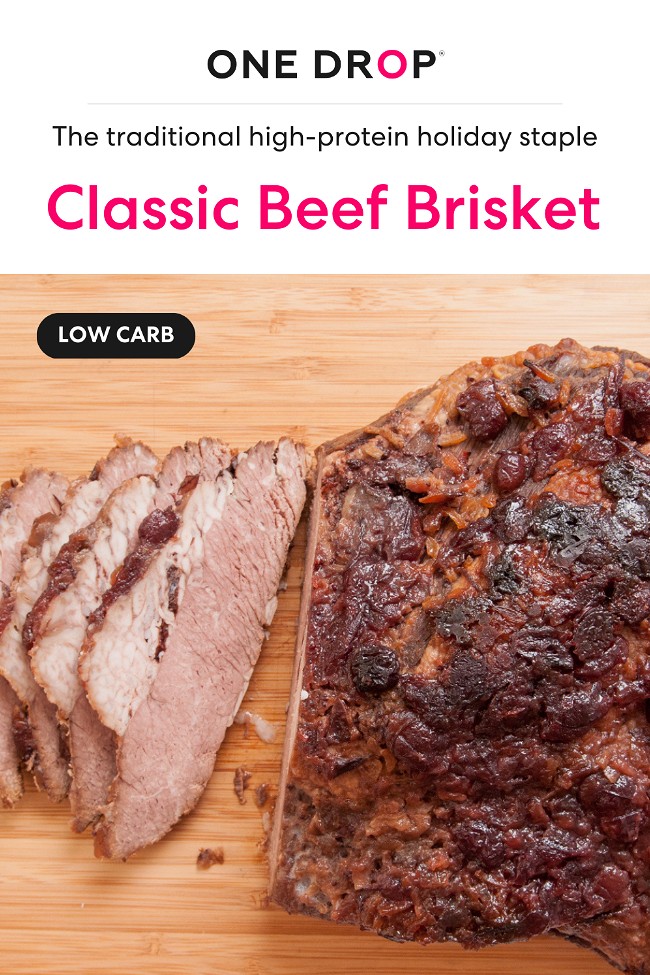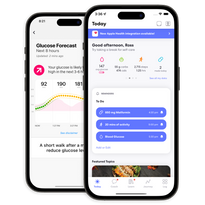Read time: 4 minutes
Beef brisket is a staple in Jewish cuisine, a beloved dish savored during celebrations like Passover, Rosh Hashanah, and Hanukkah. Whether you're a fan of Jewish cuisine or just looking for a tasty and nutritious main course for your next family dinner, this slow-cooked meat dish is for you. Beef brisket is naturally low carb, easy to make, and packed with health benefits. Read on for beef brisket nutrition information, what to do with beef brisket leftovers, and our recipe for this special dish.
Our version of beef brisket comes with a built-in side dish of carrots that roast alongside the meat, soaking up the meaty juices and coming out oh so tender. The entire dish takes about 20 minutes to prepare and three to four hours to cook. You can even make this recipe a day in advance to save time. Just keep the brisket in the refrigerator if it’s not being served that day and reheat it on the stovetop or in an oven at 325 F for 20-30 minutes or until heated through.
Keep in mind that part of the joy of beef brisket is spending the day smelling it as it cooks, adding anticipation and atmosphere during special holidays and family gatherings. Making it ahead of time means forgoing that fragrant memory.
RELATED CONTENT
Staying Low Carb for Spring Holidays
Low Carb Almond-Crusted Dijon Mahi Mahi Recipe
A Delicious Low-Carb Meal Plan for Beginners
Beef Brisket Nutrition
Beef brisket packs a whopping 26 grams of protein per 100-gram serving, which comes out to more than half of the recommended daily intake of protein for adults. This makes beef brisket a great choice for people looking to consume more protein, one of the three essential macronutrients found in a balanced diet.
Not only is beef brisket high in protein, it contains other essential nutrients and minerals that can benefit your health. Beef brisket is full of iron, a mineral crucial for the production of hemoglobin, which carries oxygen to our cells. Iron helps to keep energy up and supports a thriving immune system.
Beef brisket contains zinc, too, which supports healthy metabolism and promotes healthy skin, hair, and nails. Beef brisket is a good source of vitamin B12, vitamin B6, and niacin. B vitamins helps us to metabolize food, produce energy, and maintain a thriving nervous system.
Got Leftover Beef Brisket?
Beef brisket can feed a lot of people, making it a perfect main course for family get-togethers and holidays. But if you’re hankering for a tender brisket and you don’t have an army to feed, you’re in luck—leftovers are easy to reheat and very versatile. Here are some of our favorite ideas on what to do with your leftovers:
- Sandwiches. Slice the brisket thinly and use it as a filling for a sandwich. The best breads for leftover brisket sandwiches are ciabatta or a brioche bun, sturdy breads that can support the heft of brisket. Try an open-faced version to cut down on carbs if that aligns with your health goals. We love adding a little Dijon mustard for some extra tang.
- Stir-fry. Cut the brisket into small pieces and stir-fry with your favorite veggies for a delicious and healthy meal. Or you could stir-fry some cabbage, reheat the brisket separately, and combine at the end for a balanced meal.
- Tacos. Talk about fusion! Mexican meets Jewish when you shred leftover beef brisket and use it as a filling for tacos. Add your favorite toppings like cheese, salsa, and avocado and you’re done.
- Salad: Cube the brisket and add it to a salad for a hearty and filling meal. Try adding some nuts, cheese, and a tangy vinaigrette dressing over a bed of fresh spinach.
- Chickpea pasta: Cut the brisket into little pieces and add it to a pasta dish for an easy and filling dinner. Switching out traditional pasta for chickpea pasta will give you fewer carbs and more protein. Beef brisket goes well with a tomato-based sauce like marinara. Top with parmesan cheese and you’re good to go.




